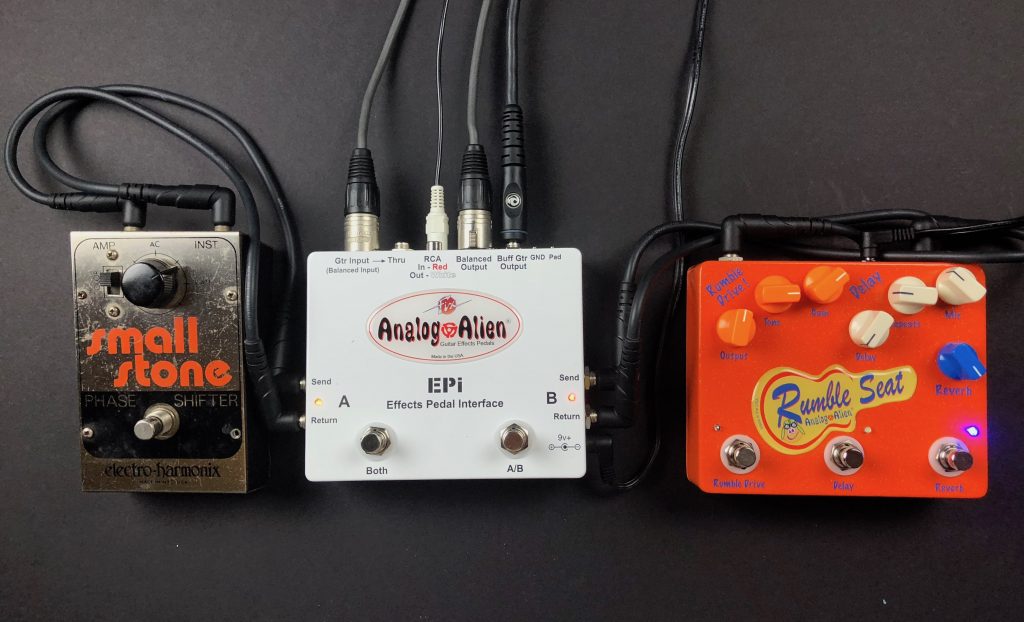Questions often seen from new effect pedals users and even some more experienced musicians is centred around how to arrange their guitar pedals and although there is no steadfast rule there are indeed some pointers and guidelines which will firstly produce great result but secondly and more importantly, give you a great jumping off point to swap things around and add new gear to create your own unique tones.
Some ground rules here, we’re going to assume the pedals are linked together in the traditional manner of one straight into another, no parallel chains, fx loops, buffers, germanium transistors, loop switchers, nor stereo will be discussed as we’re trying to keep things to the basics (but never fear, we’ll definitely cover those in the future).
If you don’t have any of the effect types then don’t worry, as this order will still work and you’ll learn where that effect type can go if you get one later.
Also please note, if you ask 100 guitarists the best pedal order you’ll get 1000 different answers .. and nope that’s not a typo.
So first up we have your Tuner pedal. It’s very important to get a good clear guitar signal to your tuner and quite simply for that reason it goes first.
Next is your wah pedal, now although the good old wah isn’t as popular as they used to be if you have one this is where it goes. Putting a wah later can result in some cool effects however that often comes with undesired exaggerated high frequencies which take a lot of work to filter out. Also a wah sounds great at this point.
Compression is up next, this can tame a wah slightly if needed and give your signal chain a nice boost at this point like a line driver pedal may. With this signal path, you can control the dynamics of the rest of your board which is really handy.
Synth is becoming more popular on boards nowadays and we advise you put it before your drives because having them before will effect how the synth behaves but after allows consistent synth tones to then be “dirtied” up, also the compressor can hit straight into the synth providing a strong clean signal for the synth to sing.
Drives order is a subject in itself and is extremely subjective! Assuming you wish to use the drive pedals for their own drive and not to push the front of an amp we advise the go from lowest gain to highest gain pedal : Overdrive > Fuzz > Distortion however lease not some fuzzes such as a EHX Big Muff is more distortion pedal like than a BOSS DS-1 so trust in your ears on this. If you experience any stuttering or high pitch sounds please check if you have any germanium drives and look at a guide about those (or ofcourse have a look at our Fuzz Bubble 45 with built in switchable buffer).
Ordering your drives this way gives the ability to “stack” them, this means putting two or more on at once which leads to some great tones … sometimes.
Please note that you may just have one overdrive pedal and that is fine or you may have 5 and they may all be overdrive and distortions, this too is also fine and the guide still applies, lowest to highest.
Lets talk about modulation pedals. So this is where we add some textures to our guitar tone and sometimes we have more than one so here’s how to line them up, wobbly to the back, steady such as a pitch shifter to the front. So for example you would have a chorus pedal before a tremolo pedal. You have to use personal preference on this but effectively the more aggressively you have modulation effects set the further towards the amp it should be.
Delay, most people will have just one and this is where it and goes. If you have two a lovely trick is to have one at half the speed of the other and slightly louder or quieter. You can have one digital and one analog for example. Individually they sound nice but put them both on together and a whole new world of delay opens up for you. Don’t confuse the term time based effects with delay here, that can mean anything such as chorus, delay & reverb, flanger etc, as these adjust the time of a repeat, sometimes by “microscopic” amounts to create the effect.
Reverb is up next for ambience then an EQ or boost so when you gig you can “Dial in the room” and jump up the volume of your whole sound. Of course a volume pedal could help with this too.
And for most of us that is it however now many people are adding amp sims and cab sims to their set up so they would naturally follow in that order.
There are many different combinations of effect and some oddities such as the MOOD delay pedal by Chase Bliss Audio, if it sounds strange put it between the modulation and the delays!
Really hope that helps, you should always experiment but if things start to get out of control this guide can always steer you back to the beginning.

